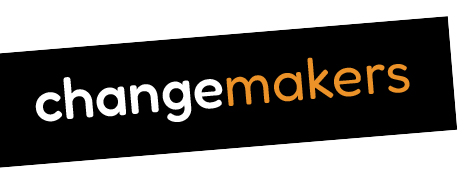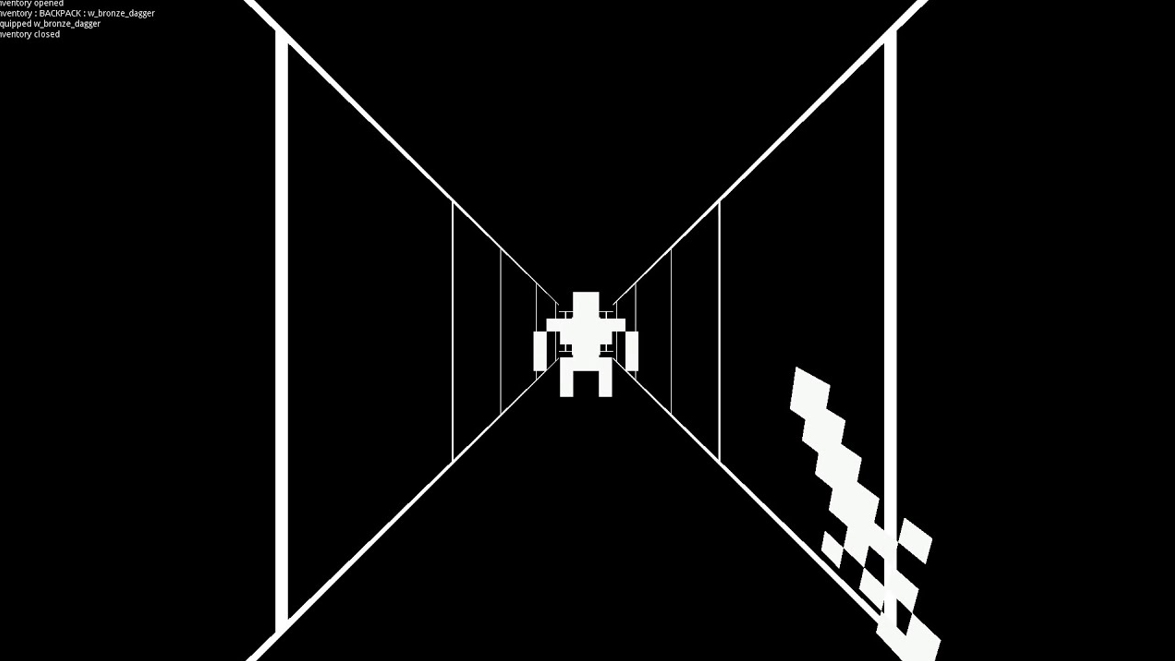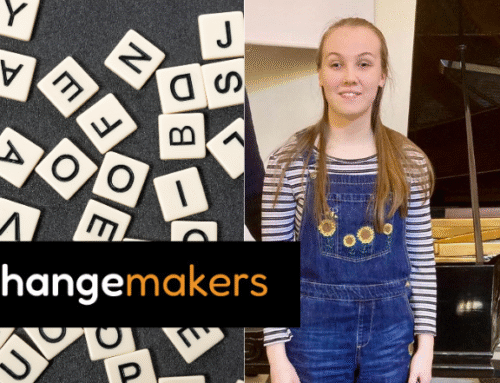
VICTA Changemakers
Blindness Awareness Month
Video games, as the name suggests, are not supportive for people without sight. The assumption that the player has sight means that there are certain aspects of any game that would stop a vision impaired person from playing, like ambiguous audio cues or precise timing. In order to create a game that works for visually impaired people, we have to try to solve these issues.
The first question we (myself and Mohammed) had to discuss in development was “What kind of game would be accessible for people with NO sight?” This lets me work backwards, solve the problems that hamper a game for blind people, and then have a game functional for people with varied vision.
What kind of game is accessible for someone with no sight?
Anything that functions or can function on only audio or haptics is an excellent example. Haptics are the vibrations in controllers or most phones. Games that use haptics can control the pitch and intensity of vibrations, making it possible to create a teachable system for navigation for example.
Taking away visual cues would make a good many games very hard to play, such as first-person shooters, but can work very well with games that don’t require quick response time. A designer named Miziziziz created a dungeon crawler designed for blind people based only on audio and haptics, so we know it can be done. Our design was a combined narration puzzle game mixed with a child-friendly game set on a farm.

VI Dungeon by Miziziziz
The game
The project is a 2D game where the player solves simple quizzes about animals with help from a friendly narrator to navigate the farm area they are in. Solving all the quizzes can win the game, but we decided that a peaceful “quizless” mode would be good for people who just wanted to explore the areas and learn fun animal facts, with the option that you could do the quizzes if you really wanted to.
Since our main focus is on accessibility for blind players, the controls had one problem: How could the player return to a very specific key on the keyboard if they ever lost it. Various iterations led to our current method of controlling the character with the F, J, and space bar. Since the F and J keys are marked with bumps on an English keyboard, and the spacebar is massive, you can’t fail to find them when roaming over the keyboard.
What about audio?
Currently, the game is heavily reliant on the audio. Stereo sound is used, and the game makes location-based environmental sounds to help players navigate. For example, if you wanted to find a cow to your left, then the cow sounds would come from the left side and get louder as you get closer. The game would have animal audio, environmental sounds for walking over different surfaces, such as gravel or grass, and narration.
The player can encounter signposts in-game. We wanted to make them interesting and unique. As we did activities with the Changemakers visiting cities all around the UK, I spent time recording sounds in various locations. When I encountered a crosswalk with my cane, I’d always first hear the sound of the crosswalk bumps, then a beep if it was safe to go across. These are well known audio cues for a cane-wielding visually impaired person.
If our player character has a cane, and if the person playing instinctively knows to stop and wait after hearing the crosswalk sounds, that meant all we had to do was recreate the sound! We can narrate instructions for the player: “Listen close. If you hear (crosswalk bumps hitting cane sound.) then there’s a sign you can interact with there!” If we placed crosswalk bumps in front of every in-game signpost, you’d stop and know to push space, since you’d know that spot is interactive!
Since the game’s text would be fully narrated, the quizzes would be fully accessible to people who are blind. As the game begins, the narrator would explain controls, objectives, and how quizzes work. They would also narrate the quizzes, and any flavour text. To give people time to hear all the dialog, it would go at a slow pace and not be a massive wall of text. We would use a large display font on the screen for people who are partially sighted, so having a massive amount of text is not a good idea for that case either.
What if the player has hearing issues?
The text of the game would be rendered in the dyslexic friendly font used for this article, Atkinson Hyperlegible. To give better contrast, the game would use a large font for the quizzes for the best visibility possible. A second feature for visibility is that the player will have a pure white silhouette that’s centred in the camera.
A showcase video of spatial audio, and our Atkinson Hyperlegible font at 36 point is shown in the narrated video I recorded. I also included a transcription of the dialog as well.
In this showcase video:
Narrator says “The silly little Guy is standing still in front of the goose. Dialog Plays.
Dialog 1: “This is Player. Player is a silly little guy.” “Silly Little Guy. Listen to the goose!”
The player stays still to hear two goose honks.
Dialog 2: Our player walks right away from the goose. “Look at his silly little walking.”
Three goose honks play, getting quieter as the player walks further away.
When they are unable to hear the goose, text reads out over the goose, saying “THE GOOSE IS QUIETER NOW. SILLY LITTLE GUY! WALK ON BACK!”
Dialog Repeat/D3: Our player waits a bit, and then heads left past the goose. (“Wow. Look at his silly little walking”)
Narrator says “The silly little Guy is heading right. Silly Little Guy, Listen to the goose!”
As they are able to hear the goose, the floating text returns to saying “SILLY LITTLE GUY. LISTEN TO THE GOOSE!” This shows that the game could be able to react to the player’s position, and change parts of the game’s intractability as you move about.
Dialog Repeat/D4: Once the player gets so far left they cannot hear, the text changes once again to “THE GOOSE IS QUIETER NOW. SILLY LITTLE GUY! WALK ON BACK!”
Our Player returns to where they started in front of the goose.
The conclusion
I am a visually impaired game developer, and I haven’t found a great many video games that are very supportive for a wide range of people who are blind, visually impaired, or deaf. This is a rather wide scope of impairments to design for, but any game trying to address these needs and still be fun is a good thing. If the Changemakers develop this game, it will be a welcome addition to the small roster of disability supportive games that I feel there should always be more of.
If there’s any inclusive games you know, enjoy, or wanted to create yourself, you can share them in the comments below.
Written by Bennet Pierce






I’ve never played a video game before, but this sounds interesting. Also, I live on a farm so I would probably be quite good at identifying the animals!